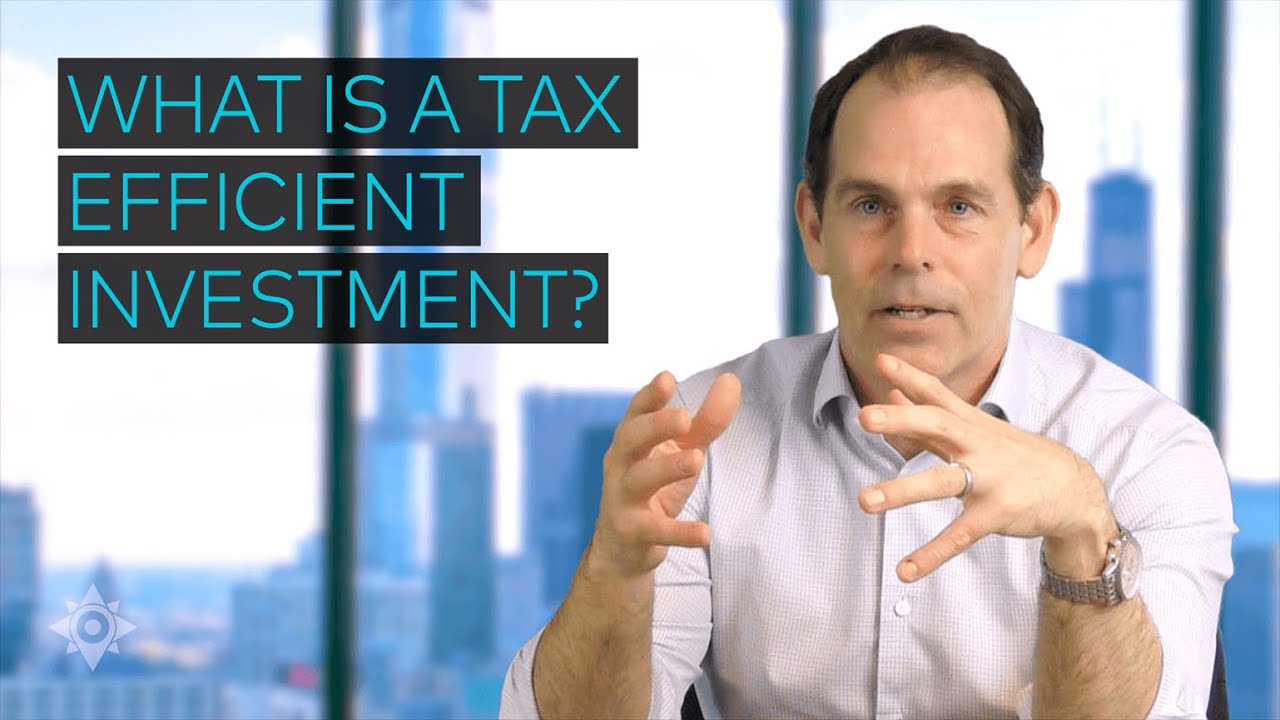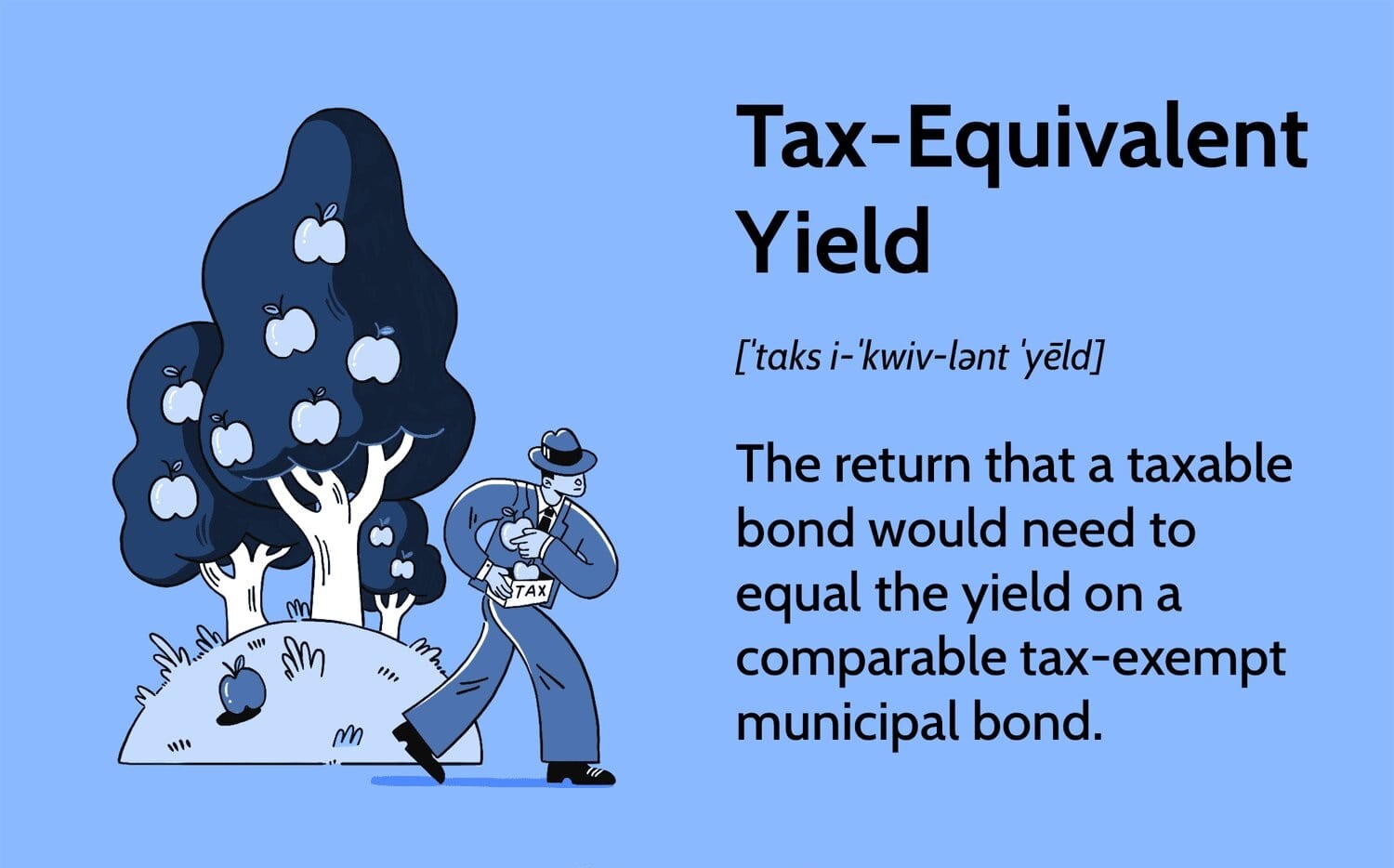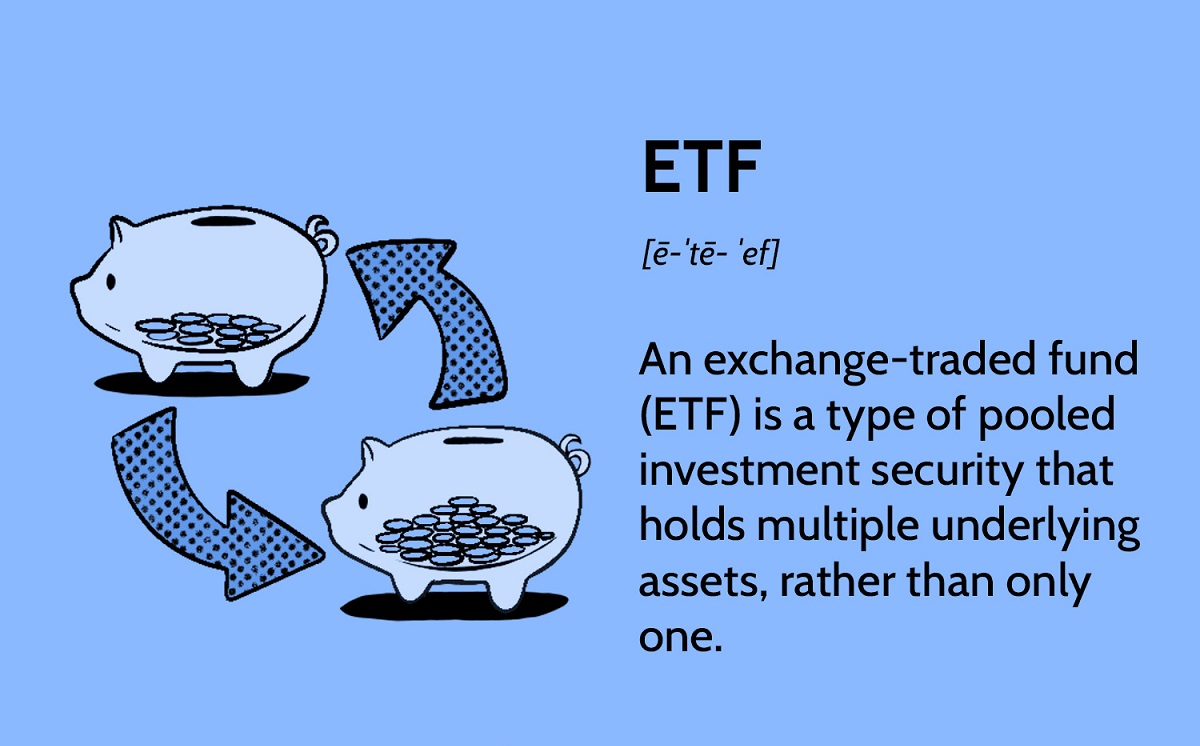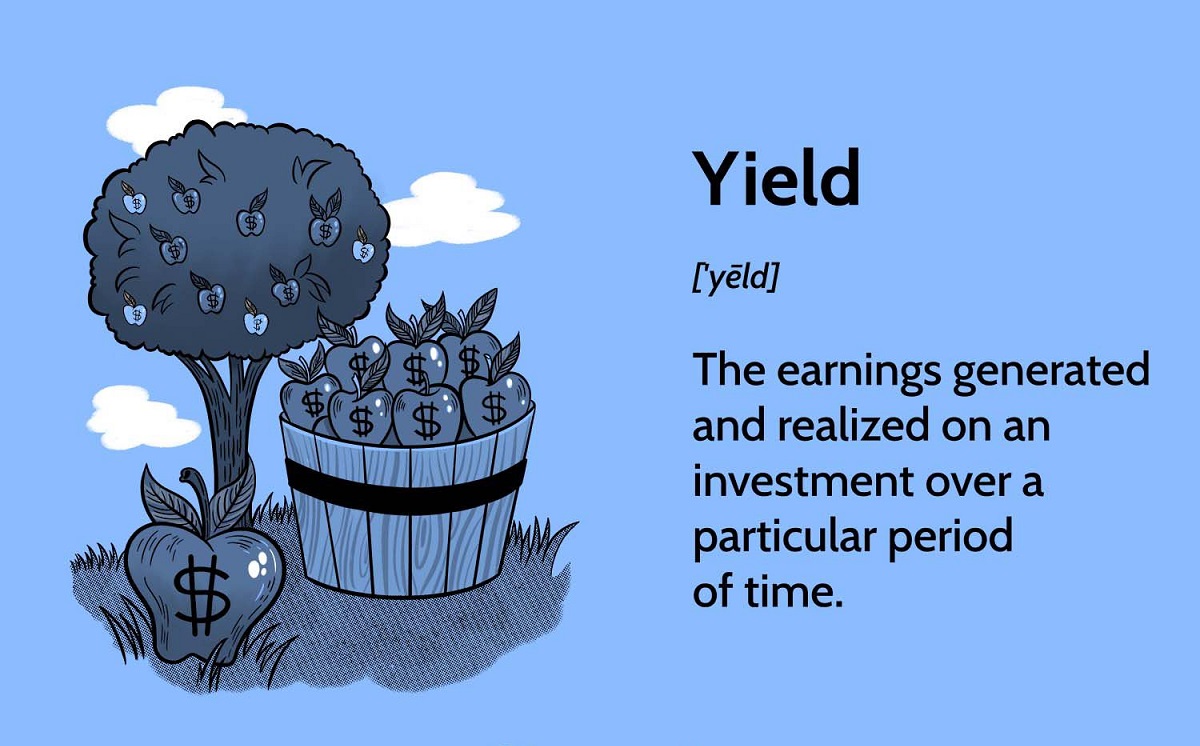The Importance of Tax Efficiency in Investments
When it comes to investing, maximizing returns is often a top priority for many individuals. However, amidst the pursuit of high returns, it’s easy to overlook the importance of tax efficiency in investments. Tax efficiency refers to the ability of an investment to minimize the amount of taxes paid on returns, allowing investors to keep more of their hard-earned money.
One of the key reasons why tax efficiency is crucial is that taxes can significantly eat into investment returns. By strategically choosing tax-efficient investments, investors can reduce their tax liabilities and ultimately increase their after-tax returns. This can have a substantial impact, especially over the long term, as the compounding effect of tax savings can enhance overall portfolio growth.
Furthermore, tax-efficient investments can provide individuals with more flexibility and control over their financial future. By minimizing tax obligations, investors have the opportunity to redirect those savings into other areas, such as additional investments, retirement savings, or even funding important life goals. Ultimately, tax efficiency allows investors to make the most of their investment dollars and achieve their financial objectives sooner.
Additionally, tax-efficient investing can help mitigate risk. By strategically structuring investments to minimize taxes, investors can potentially reduce the impact of market volatility on their overall returns. This is especially significant in taxable investment accounts where capital gains and dividends are subject to taxation. By minimizing tax liabilities, investors can enhance their overall risk-adjusted returns and create a more stable investment portfolio.
Another important aspect of tax efficiency is its impact on estate planning. By implementing tax-efficient investment strategies, individuals can pass on their wealth to future generations in a more effective and tax-smart manner. Through options like gifting appreciated securities or utilizing tax-advantaged accounts, individuals can minimize estate taxes and maximize the wealth transferred to their heirs.
Overall, tax efficiency in investments is not just a nicety, but a crucial factor that can significantly impact an investor’s financial well-being. By carefully considering the tax implications of different investment options and seeking out tax-efficient options, individuals can optimize their investment returns, increase their financial flexibility, and create a more resilient investment portfolio.
What is Tax Efficiency in Investments?
Tax efficiency refers to the ability of an investment to minimize the amount of taxes paid on returns. In simple terms, it means finding ways to legally minimize the tax impact on investment gains. When considering investments, it’s important to understand that not all investments are created equal in terms of their tax efficiency. Some investments are designed to be more tax-friendly than others.
One way investments can be tax-efficient is by generating income that is taxed at a lower rate or even exempt from certain taxes. For example, tax-exempt bonds, also known as municipal bonds, are debt securities issued by state and local governments. The interest earned on these bonds is typically exempt from federal taxes and, in some cases, state and local taxes as well. By investing in tax-exempt bonds, individuals can potentially reduce their tax liabilities and enhance their after-tax returns.
Another aspect of tax efficiency is minimizing capital gains taxes. This can be achieved through investments such as index funds, which aim to replicate the performance of a specific market index. Since index funds generally have lower turnover compared to actively managed funds, investors can potentially reduce the number of taxable transactions and effectively lower their capital gains taxes.
Tax-managed mutual funds are also designed with tax efficiency in mind. These funds employ strategies to minimize tax liabilities, such as minimizing capital gains distributions, by strategically buying and selling securities within the fund. By actively managing the tax consequences of the fund’s portfolio, tax-managed mutual funds seek to enhance after-tax returns for investors.
Exchange-Traded Funds (ETFs) are another tax-efficient investment option. ETFs are structured in a way that allows investors to avoid incurring capital gains taxes when other investors buy or sell shares of the fund. This tax advantage is due to the “in-kind” creation and redemption process employed by ETFs.
Tax efficiency can also be achieved through investment vehicles specifically designed to offer tax advantages. For example, 529 College Savings Plans provide tax-free growth and tax-free withdrawals for qualified education expenses. This can be particularly advantageous for parents or guardians saving for their children’s education.
Health Savings Accounts (HSAs) are another tax-efficient investment tool. By contributing to an HSA, individuals can deduct their contributions from their taxable income, and the investment growth is tax-free. Withdrawals from the HSA for qualified medical expenses are also tax-free, making it a powerful tax-saving vehicle.
Real Estate Investment Trusts (REITs) can also be tax-efficient investments. REITs allow investors to gain exposure to the real estate market while potentially receiving favorable tax treatment. By law, REITs are required to distribute a significant portion of their taxable income to shareholders in the form of dividends, which may be eligible for a reduced tax rate.
Certificates of Deposit (CDs) can also be considered tax-efficient investments, particularly if they are held in tax-advantaged accounts such as Individual Retirement Accounts (IRAs). By investing in CDs within these tax-advantaged accounts, individuals can potentially defer taxes on the interest earned until they withdraw funds during retirement, making it a tax-friendly option.
Municipal bonds, also mentioned earlier, offer tax advantages for individuals in higher tax brackets. Interest earned from municipal bonds is generally exempt from federal income taxes and, in some cases, state and local taxes.
Lastly, contributing to Roth IRAs and Roth 401(k)s can be highly tax-efficient. Although contributions to these retirement accounts are not tax-deductible, qualified withdrawals in retirement are tax-free, including any earnings on the investments.
Understanding tax efficiency in investments is crucial in optimizing investment returns and minimizing tax liabilities. By incorporating tax-efficient investments into a well-rounded portfolio, individuals can maximize after-tax returns and pave the way for long-term financial success.
Types of Tax Efficient Investments
When it comes to tax-efficient investing, there are various investment options available to individuals seeking to minimize their tax liabilities and maximize after-tax returns. Let’s explore some of the most common types of tax-efficient investments:
- Tax Exempt Bonds: Also known as municipal bonds, tax-exempt bonds are issued by state and local governments. The interest earned on these bonds is typically exempt from federal taxes and, in some cases, state and local taxes as well. Investing in tax-exempt bonds can provide investors with a steady income stream while reducing their overall tax burden.
- Index Funds: Index funds are investment funds designed to replicate the performance of a specific market index. Since they are passively managed and have lower turnover compared to actively managed funds, index funds can be more tax-efficient. Lower turnover means fewer taxable events, reducing capital gains distributions and minimizing tax liabilities for investors.
- Tax Managed Mutual Funds: Tax-managed mutual funds are specifically structured to minimize tax consequences for investors. These funds employ strategies such as strategically buying and selling securities within the fund to minimize capital gains distributions. By actively managing the tax impact of the fund’s portfolio, tax-managed mutual funds aim to enhance after-tax returns.
- Exchange-Traded Funds (ETFs): ETFs are similar to index funds but trade on stock exchanges like individual stocks. One advantage of ETFs is the “in-kind” creation and redemption process, which allows investors to avoid capital gains taxes when other investors buy or sell shares of the fund. ETFs can offer tax efficiency and flexibility while providing diversification across various asset classes.
- 529 College Savings Plans: Designed specifically for education savings, 529 plans offer tax advantages for investors. Contributions to a 529 plan grow tax-free, and qualified withdrawals for education expenses are also tax-free. This makes 529 plans a tax-efficient option for parents or guardians saving for their children’s educational future.
- Health Savings Accounts (HSAs): HSAs offer tax advantages for individuals with high-deductible health insurance plans. Contributions to an HSA are tax-deductible, the investment growth is tax-free, and withdrawals for qualified medical expenses are tax-free. HSAs provide an opportunity for individuals to save for healthcare expenses while enjoying significant tax savings.
- Real Estate Investment Trusts (REITs): REITs are investment vehicles that allow individuals to invest in real estate without directly owning properties. By law, REITs must distribute a significant portion of their taxable income to shareholders in the form of dividends, which may be eligible for a reduced tax rate. Investing in REITs can provide tax advantages and a potential source of regular income for investors.
- Certificates of Deposit (CDs): CDs can be considered tax-efficient investments, especially if held in tax-advantaged accounts like IRAs. While the interest earned on CDs is generally taxable, holding them within tax-advantaged accounts allows individuals to defer taxes on the interest until they withdraw funds during retirement.
- Municipal Bonds: As mentioned earlier, municipal bonds offer tax advantages for individuals in higher tax brackets. The interest earned from these bonds is generally exempt from federal income taxes and, in some cases, state and local taxes. Investing in municipal bonds can provide investors with tax-free income and potential tax savings.
- Roth IRAs and Roth 401(k)s: Contributing to Roth retirement accounts can be highly tax-efficient. While contributions to Roth accounts are not tax-deductible, qualified withdrawals in retirement are tax-free, including any earnings on the investments. Roth accounts offer tax-free growth potential and can be a valuable tool for long-term tax planning.
These are just a few examples of tax-efficient investments available to investors. By incorporating these types of investments into a diversified portfolio, individuals can reduce their tax liabilities and optimize their overall investment returns.
Tax Exempt Bonds
Tax exempt bonds, also known as municipal bonds, are fixed-income securities issued by state and local governments. These bonds are issued to raise funds for various public projects, such as infrastructure development and education initiatives. One of the key advantages of tax exempt bonds is that the interest earned on them is typically exempt from federal taxes, and in some cases, state and local taxes as well.
Investing in tax exempt bonds can provide investors with a reliable income stream while offering potential tax savings. The interest payments received from these bonds are often paid at regular intervals, providing a predictable source of income. Investors in higher tax brackets can particularly benefit from tax exempt bonds as they can reduce their overall tax liabilities.
There are two main types of tax exempt bonds: general obligation bonds and revenue bonds. General obligation bonds are backed by the full faith and credit of the issuing municipality, meaning they have a lower risk of default. Revenue bonds, on the other hand, are backed by the revenue generated by a specific project, such as tolls from a bridge or fees from a utility system. These bonds tend to carry a slightly higher risk, but they can also offer higher yields.
It’s important to note that while tax exempt bonds offer tax advantages, they typically have lower yields compared to taxable bonds. The tax-exempt status of these bonds makes them attractive to individuals seeking income with reduced tax implications. Investors should carefully consider their tax bracket and investment goals when deciding whether to invest in tax exempt bonds.
Additionally, investors need to evaluate the creditworthiness of the issuing municipality or entity before investing in tax exempt bonds. Credit ratings assigned to these bonds by credit rating agencies can provide guidance on the issuer’s ability to meet its financial obligations. Higher-rated bonds tend to have lower default risk but may offer lower yields. Conversely, lower-rated bonds may offer higher yields but come with a higher risk of default.
It’s worth mentioning that tax laws and regulations related to tax exempt bonds can vary by jurisdiction. Investors should consult with a financial advisor or tax professional to fully understand the tax implications and potential benefits of investing in tax exempt bonds based on their specific circumstances.
In summary, tax exempt bonds are investment vehicles issued by state and local governments that offer tax advantages to investors. The interest earned on these bonds is typically exempt from federal taxes and, in some cases, state and local taxes as well. By including tax exempt bonds in their investment portfolio, individuals can potentially generate a reliable income stream while reducing their overall tax liabilities.
Index Funds
Index funds are investment funds that aim to replicate the performance of a specific market index, such as the S&P 500 or the Dow Jones Industrial Average. These funds provide investors with a diversified portfolio of securities that mirror the composition of the underlying index. One of the key advantages of investing in index funds is their tax efficiency.
Index funds are considered tax-efficient because they have a lower turnover compared to actively managed funds. Turnover refers to the frequency of buying and selling securities within a fund. Since index funds aim to replicate the performance of an index, they have relatively little turnover as they only need to adjust their portfolio holdings when changes occur in the index composition.
Lower turnover translates into fewer taxable transactions, which can result in reduced capital gains distributions and lower tax liabilities for investors. When a fund sells a security that has appreciated in value, it realizes a capital gain, which is subject to capital gains taxes. By minimizing turnover, index funds can help investors minimize these taxable events and potentially enhance after-tax returns. This is particularly advantageous for long-term investors who are focused on building wealth over time.
Furthermore, index funds often hold securities for a longer duration, which can lead to the deferral of taxes on capital gains. As long as investors hold their shares in an index fund, they can defer taxes on any capital gains that the fund may realize until the shares are sold. This deferral can provide individuals with a tax advantage by allowing them to postpone the tax obligation and potentially reduce the impact of taxes on their overall investment returns.
Another tax advantage of index funds is the ability to selectively realize capital losses to offset capital gains. When an investor sells shares of an index fund at a loss, they can use those losses to offset any capital gains they may have realized from other investments. This strategy, known as tax-loss harvesting, allows investors to reduce their taxable income and potentially lower their tax liabilities.
It’s important to note that although index funds offer tax advantages, taxes may still be incurred when an investor sells their shares or receives dividends from the fund. However, compared to actively managed funds that often have higher turnover and capital gains distributions, index funds are generally more tax-efficient.
Investors should consider their investment objectives, risk tolerance, and tax situation when deciding whether to invest in index funds. These funds provide diversification, low costs, and tax efficiency, making them attractive investment options for individuals seeking long-term growth in a tax-efficient manner.
In summary, index funds are investment vehicles that seek to replicate the performance of a specific market index. Due to their low turnover and tax-efficient structure, index funds can help investors minimize capital gains distributions, defer taxes on capital gains, and strategically offset losses. By including index funds in their investment portfolio, individuals can potentially enhance after-tax returns and achieve their long-term financial goals.
Tax Managed Mutual Funds
Tax managed mutual funds are investment vehicles specifically designed to minimize the tax consequences for investors. These funds implement strategies aimed at reducing taxable distributions, capital gains, and overall tax liabilities, while still pursuing investment returns.
One of the key strategies employed by tax managed mutual funds is tax-efficient portfolio management. Fund managers carefully select securities and actively manage the fund’s holdings to minimize taxable events. They aim to balance the need for potential growth with the goal of minimizing taxable gains and distributions. By strategically buying and selling securities within the fund, tax managed mutual funds aim to optimize after-tax returns for investors.
Another tax management strategy employed by these funds is tax loss harvesting. This involves selling securities that have experienced losses to offset taxable gains elsewhere in the portfolio. By selectively realizing losses, tax managed funds can help investors reduce their taxable income and subsequently lower their overall tax liabilities.
Tax managed mutual funds also use strategies such as asset location and tax-efficient rebalancing. The asset location strategy involves allocating investments within different types of accounts, such as placing tax-inefficient investments in tax-advantaged accounts like IRAs or 401(k)s. This helps to maximize the tax benefits associated with different investment types. Tax-efficient rebalancing involves adjusting the portfolio periodically to maintain the desired asset allocation while considering the tax consequences of the rebalancing actions.
It’s worth noting that while tax managed mutual funds aim to minimize taxes, they cannot entirely eliminate tax liabilities. Taxes may still be incurred when investors sell their shares or receive dividends from the fund. However, compared to traditional mutual funds that may have higher turnover and generate significant capital gains distributions, tax managed mutual funds generally strive to reduce taxable events and enhance after-tax returns for investors.
Investors considering tax managed mutual funds should bear in mind that these funds may have higher expense ratios compared to non-tax managed funds. The added cost stems from the active portfolio management and tax planning strategies employed by these funds. However, the potential tax benefits and after-tax returns can often offset the slightly higher expenses, particularly for investors in higher tax brackets.
Tax managed mutual funds can be a suitable option for individuals seeking tax efficiency while still benefiting from professional investment management. These funds are particularly appealing to investors who prioritize after-tax returns and are willing to pay a slightly higher expense ratio for the potential tax advantages they offer.
In summary, tax managed mutual funds implement strategies to minimize tax liabilities and maximize after-tax returns for investors. Through tax-efficient portfolio management, tax loss harvesting, and other strategies, these funds aim to optimize the tax consequences of their investment activities. By including tax managed mutual funds in their investment portfolio, individuals can potentially enhance their after-tax returns and achieve their long-term financial goals in a tax-efficient manner.
Exchange-Traded Funds (ETFs)
Exchange-Traded Funds (ETFs) are investment vehicles that trade on stock exchanges, similar to individual stocks. They provide investors with the opportunity to gain exposure to a diversified portfolio of securities, such as stocks, bonds, or commodities, in a single investment.
One of the key advantages of ETFs is their tax efficiency. Unlike traditional mutual funds, ETFs often experience fewer taxable events that can trigger capital gains distributions. This is due to the unique structure of ETFs, which allows for the creation and redemption of shares “in-kind” without triggering taxable events.
When an investor purchases shares of an ETF, authorized participants, typically large financial institutions, create new ETF shares by delivering a basket of the fund’s underlying securities to the ETF issuer. In return, the authorized participants receive newly created ETF shares. This creation and redemption process allows the ETF to avoid the need to sell securities in the open market, reducing taxable transactions and potential capital gains distributions.
Furthermore, investors have control over when they realize capital gains or losses with ETFs. When an investor sells shares of an ETF, they can choose the timing and price at which they exit the investment. This flexibility allows investors to strategically manage their tax liabilities by selling shares when it is most advantageous from a tax perspective.
Another tax advantage of ETFs is the ability to selectively offset capital gains with capital losses. If an investor has realized capital gains from other investments, they can sell shares of an ETF at a capital loss to offset those gains. This tax-loss harvesting strategy can help lower an investor’s taxable income and potentially reduce overall tax liabilities.
It’s important to note that while ETFs offer tax advantages, investors may still face taxes when selling shares or receiving dividends from the fund. Additionally, certain types of ETFs, such as those focused on commodities or actively managed ETFs, may have different tax implications. Investors should understand the tax implications of the specific ETF they are considering and consult with a tax professional if needed.
ETFs provide investors with diversification, transparency, and tax efficiency. They offer flexibility in trading, allowing investors to buy and sell shares throughout the trading day at market prices. With a wide range of ETFs available in various asset classes and investment strategies, investors have the opportunity to build a well-rounded portfolio that suits their investment goals and risk tolerance.
Investing in ETFs can be particularly appealing for individuals seeking tax efficiency in their investment portfolios. The ability to minimize taxable events, strategically manage capital gains, and offset gains with losses makes ETFs an attractive option for investors looking to optimize after-tax returns.
In summary, ETFs are investment vehicles that provide investors with a tax-efficient way to gain exposure to a diversified portfolio of securities. Their unique structure allows for potential tax advantages, including reduced capital gains distributions and flexibility in managing capital gains and losses. By including ETFs in their investment strategy, individuals can potentially enhance after-tax returns and achieve their financial objectives.
529 College Savings Plans
529 college savings plans are investment vehicles specifically designed to help families save for the future education expenses of their children or beneficiaries. These plans offer tax advantages that can make saving for higher education more affordable and efficient.
One of the key tax advantages of 529 plans is the potential for tax-free growth. Contributions made to a 529 plan are considered after-tax, meaning there is no federal tax deduction for the contributions. However, the investment earnings within the plan grow tax-free, and qualified withdrawals used for qualified education expenses are also tax-free. This tax-free growth allows the invested funds to potentially accumulate more over time compared to taxable investment accounts.
Qualified education expenses include tuition, fees, books, supplies, and certain room and board costs at eligible educational institutions. The tax benefits of 529 plans can be used for both undergraduate and graduate programs.
In addition to federal tax benefits, many states offer their own tax incentives for residents who contribute to their in-state 529 plans. These incentives may include state income tax deductions or credits. It’s important to note that each state’s tax incentives may vary, so it is essential to research and understand the specific benefits offered by the state where the 529 plan is established.
529 plans also offer flexibility in terms of ownership and beneficiary designations. Parents, grandparents, relatives, or even friends can open and contribute to an account on behalf of a designated beneficiary. In the event that the original beneficiary does not use all or part of the funds, the account owner can change the beneficiary to another eligible family member without triggering taxes or penalties.
Another benefit of 529 plans is the high contribution limits. While the specific limits vary by state, they typically allow for substantial contributions to be made over time. These higher contribution limits can be advantageous for families looking to save larger amounts for their child’s education.
It’s worth noting that if funds from a 529 plan are used for non-qualified expenses, the earnings portion of the withdrawal may be subject to federal income tax and a 10% penalty. However, the principal amount of the contributions is not subject to the penalty.
When considering a 529 plan, it is important to carefully evaluate the investment options and fees associated with the plan. Most plans offer a range of investment options, such as age-based portfolios or individual fund selections. Investors should assess their risk tolerance and investment objectives to select the most suitable investment options within the plan.
529 college savings plans provide families with a tax-advantaged way to save for higher education expenses. The potential for tax-free growth, state tax incentives, flexibility in ownership and beneficiary designations, and higher contribution limits make these plans an attractive option for families looking to plan for their children’s educational future.
In summary, 529 college savings plans offer tax advantages that can make saving for higher education more affordable. With tax-free growth potential, state tax incentives, and flexibility in ownership and beneficiary designations, these plans provide families with a comprehensive approach to preparing for the costs of education.
Health Savings Accounts (HSAs)
Health Savings Accounts (HSAs) are tax-advantaged savings accounts that allow individuals with high-deductible health insurance plans to set aside funds for qualified medical expenses. HSAs offer a triple tax advantage, making them a powerful tool for individuals aiming to save for healthcare costs.
The first tax advantage of HSAs is the ability to make contributions with pre-tax dollars. The contributions individuals make to their HSAs are tax-deductible, meaning they can reduce their taxable income for the year. These contributions can be made either by the account holder or their employer, subject to annual contribution limits set by the IRS.
The second tax advantage of HSAs is the tax-free growth of the funds. Similar to a retirement account, the investments within an HSA can grow over time, and any earnings or interest generated are not subject to federal income taxes. This tax-free growth allows the HSA funds to potentially accumulate and compound, providing individuals with a significant financial resource when it comes to medical expenses.
The third tax advantage of HSAs is the tax-free withdrawals for qualified medical expenses. When individuals use HSA funds to pay for eligible medical expenses, the withdrawals are tax-free. Qualified medical expenses include a wide range of healthcare costs, such as doctor’s visits, prescription medications, dental and vision care, and even certain medical equipment or treatments.
One significant benefit of HSAs is the ability to carry over unused funds from year to year. Unlike Flexible Spending Accounts (FSAs), which often have a “use-it-or-lose-it” provision, HSA funds can be rolled over indefinitely. This allows individuals to accumulate funds over time, providing a valuable safety net for future medical expenses or during retirement.
HSAs also offer portability and flexibility. The account is owned by the individual, not their employer, which means it can move with them if they change jobs or leave the workforce. Additionally, HSAs can be invested in a variety of investment options, similar to an Individual Retirement Account (IRA), allowing for potential growth and maximizing the long-term financial benefits.
It’s important to note that HSAs are specifically tied to high-deductible health insurance plans. To be eligible for an HSA, individuals must be enrolled in a qualifying high-deductible health plan and cannot be covered by other non-high-deductible health insurance or be claimed as a dependent on someone else’s tax return.
While HSAs offer many tax advantages, it’s crucial to use the funds for qualified medical expenses to maintain the tax benefits. If withdrawals are made for non-qualified expenses before age 65, they may be subject to both income taxes and an additional 20% penalty.
In summary, Health Savings Accounts (HSAs) are tax-advantaged savings accounts that provide individuals with a triple tax advantage for qualified medical expenses. With the ability to contribute pre-tax dollars, tax-free growth, and tax-free withdrawals for eligible medical expenses, HSAs are a powerful financial tool for individuals seeking to save for healthcare costs while enjoying significant tax savings.
Real Estate Investment Trusts (REITs)
Real Estate Investment Trusts (REITs) are investment vehicles that enable individuals to invest in a diversified portfolio of income-generating real estate assets. They offer investors the opportunity to participate in the real estate market without the need to directly own and manage properties. Apart from their potential for regular income, REITs also offer tax advantages as an investment option.
One tax advantage of investing in REITs is the potential for favorable tax treatment on dividends. By law, REITs are required to distribute a significant portion of their taxable income to shareholders in the form of dividends. These dividends often receive preferential tax treatment. Depending on the individual’s tax bracket, dividends from REITs could be taxed at a lower rate than ordinary income, providing potential tax savings.
Additioally, investing in REITs within a tax-advantaged account, such as an IRA or a 401(k), can offer additional tax advantages. By holding REITs in these accounts, investors can potentially defer taxes on the dividends and capital gains earned from the investment until they withdraw funds during retirement. This tax deferral allows for potential growth and compounding of the investment within the account.
Furthermore, REITs can provide investors with the opportunity to deduct their share of the REIT’s depreciation expenses on their tax returns. Depreciation is a non-cash expense that accounts for the wear and tear, physical deterioration, or obsolescence of the REIT’s properties. The deduction of depreciation expenses can help offset a portion of the taxable income generated by the REIT, potentially reducing the investor’s overall tax liabilities.
It’s important to note that like any investment, gains realized from the sale of REIT shares may be subject to capital gains taxes. The tax rate on these capital gains depends on the holding period and the individual’s tax bracket. Additionally, the tax implications of investing in REITs can vary depending on the specific structure and classification of the REIT.
Investing in REITs also offers potential diversification benefits, as they provide access to a broad range of real estate properties and sectors. From commercial properties like office buildings, shopping malls, and hotels to residential properties like apartments and single-family homes, REITs offer investors exposure to different segments of the real estate market. This diversification can help mitigate risk and potentially enhance overall investment returns.
Before investing in REITs, individuals should carefully consider their investment objectives, risk tolerance, and tax situation. It’s important to research and evaluate the specific REIT’s performance, management, and financial stability. Additionally, investors should consult with a tax professional to fully understand the potential tax implications of investing in a particular REIT.
In summary, Real Estate Investment Trusts (REITs) offer investors the ability to participate in the real estate market while potentially benefiting from tax advantages. With potential preferential tax treatment on dividends, the ability to hold REITs in tax-advantaged accounts, and the opportunity to deduct depreciation expenses, REITs provide investors with the potential for tax savings and the potential for regular income from their real estate investments.
Certificates of Deposit (CDs)
Certificates of Deposit (CDs) are a type of fixed-income investment offered by banks and credit unions that provide investors with a predictable return on their investment over a specific period of time. CDs are known for their safety and reliability, and they offer certain tax advantages that make them an attractive option for conservative investors.
One of the tax advantages of investing in CDs is that the interest earned on these investments is generally subject to federal income tax. However, if the CD is held within a tax-advantaged account such as an Individual Retirement Account (IRA) or a 401(k), the interest earned is tax-deferred. This means that individuals do not have to pay taxes on the interest until they withdraw funds from the account, usually during retirement. By utilizing tax-advantaged accounts, investors can potentially optimize the tax benefits associated with investing in CDs.
CDs also offer individuals the opportunity to control when they receive interest payments. Some CDs provide the option for interest to be paid out periodically, while others allow for the interest to be reinvested and compounded. By choosing to reinvest the interest, individuals can potentially maximize their earnings and defer taxes on the interest until the CD matures or funds are withdrawn from the account. This can be particularly advantageous for individuals in higher tax brackets seeking to maximize their after-tax returns.
It’s important to note that early withdrawals from CDs may be subject to penalties and may impact the interest earned. The penalties vary depending on the specific terms of the CD, such as the length of the term and the institution offering the CD. Additionally, the interest earned on CDs is still subject to state and local taxes, so individuals should consider the relevant tax implications based on their specific jurisdiction.
CDs are often seen as a low-risk investment option, as they are insured by the Federal Deposit Insurance Corporation (FDIC) for up to $250,000 per depositor, per bank. This insurance provides individuals with a level of protection in case the issuing institution experiences financial difficulties. The low-risk nature of CDs, combined with their potential tax advantages, makes them an attractive investment option for individuals seeking stability and reliable returns.
Investors should carefully consider their investment goals, time horizon, and tax situation when deciding to invest in CDs. It’s important to shop around and compare the interest rates and terms offered by different institutions to ensure the best possible return on investment. Additionally, individuals should evaluate their need for liquidity, as CDs typically come with a fixed term, and early withdrawals may result in penalties.
In summary, Certificates of Deposit (CDs) offer investors a reliable and tax-advantaged investment option. With the potential for tax-deferred earnings within tax-advantaged accounts and the safety of FDIC insurance, CDs provide individuals with a secure and predictable investment option.
Municipal Bonds
Municipal bonds, also known as “munis,” are debt securities issued by state and local governments. These bonds play a crucial role in funding public projects such as schools, hospitals, highways, and infrastructure. One of the key advantages of investing in municipal bonds is their tax benefits, making them an attractive option for income-seeking investors.
One of the primary tax advantages of investing in municipal bonds is that the interest earned is generally exempt from federal income taxes. This tax-exempt status means that investors do not have to include the interest received from municipal bonds on their federal tax returns. Depending on the bond and the investor’s tax situation, the interest may also be exempt from state and local taxes.
Investing in municipal bonds can be particularly advantageous for individuals in higher tax brackets, as the tax-free nature of the interest payments can result in higher after-tax returns compared to taxable investments with similar yields. This tax advantage allows investors to potentially enhance their overall income and keep more of their investment returns.
It’s important to note that not all municipal bonds offer tax-exempt interest. Some municipal bonds, known as “taxable municipals,” are subject to federal income taxes. These bonds are typically issued to fund projects that do not meet the criteria for tax-exempt status, such as private development projects or certain types of infrastructure. Investors should carefully review the tax status of individual municipal bonds before making investment decisions.
Beyond their tax advantages, municipal bonds are generally considered to be relatively safe investments. This is due to the fact that they are backed by the issuing government’s ability to generate revenue from taxes or specific projects. Municipal bonds are also subject to credit ratings, which evaluate the financial strength and creditworthiness of the issuing government or entity. Higher-rated bonds are generally associated with lower default risk, while lower-rated bonds may offer higher yields but come with increased credit risk.
It’s important for investors to carefully evaluate the creditworthiness of the issuing entity before investing in municipal bonds. Credit ratings and financial disclosures can provide insights into the issuer’s ability to meet its financial obligations. Investors should also consider their risk tolerance, investment goals, and time horizon when selecting municipal bonds.
While municipal bonds offer tax advantages, it’s important for investors to understand that the tax savings from investing in these bonds may not be beneficial for certain tax-exempt accounts, such as individual retirement accounts (IRAs) or other tax-advantaged retirement plans. Additionally, state and local taxes may still apply to some municipal bonds, depending on the investor’s residency.
In summary, municipal bonds provide investors with the potential for tax-free income while supporting public projects in their communities. The tax-exempt status of the interest payments can result in higher after-tax returns, especially for individuals in higher tax brackets. However, investors should carefully evaluate the creditworthiness of the issuer and consider their own tax situation before investing in municipal bonds.
Roth IRAs and Roth 401(k)s
Roth Individual Retirement Accounts (IRAs) and Roth 401(k)s are retirement savings vehicles that offer unique tax advantages when compared to traditional retirement accounts. Both Roth IRAs and Roth 401(k)s provide individuals with the opportunity for tax-free growth and tax-free withdrawals, making them valuable tools for long-term tax planning and building retirement savings.
One of the key tax advantages of Roth IRAs and Roth 401(k)s is that contributions are made with after-tax dollars. Unlike traditional retirement accounts where contributions are tax-deductible, contributions to Roth accounts are made with income that has already been taxed. While this means that contributions do not provide an immediate tax benefit, it sets the stage for tax-free withdrawals in retirement.
Once funds are contributed to a Roth IRA or Roth 401(k), the investment earnings can grow tax-free. The growth is not subject to current taxation, allowing the account balance to potentially grow significantly over time. This tax-free growth is a major advantage for individuals looking to maximize their retirement savings and potentially achieve higher after-tax returns compared to taxable investment accounts.
The most significant tax advantage of Roth IRAs and Roth 401(k)s is the ability to make tax-free withdrawals during retirement. Unlike traditional retirement accounts where withdrawals are subject to income taxes, qualified withdrawals from Roth accounts are entirely tax-free. In order for a withdrawal to be considered “qualified,” the account holder must generally be at least 59 ½ years old and the account must have been open for at least five years. This tax-free income in retirement can provide individuals with more flexibility and financial security.
Roth accounts also offer additional advantages when it comes to Required Minimum Distributions (RMDs). Traditional retirement accounts, such as traditional IRAs and traditional 401(k)s, require individuals to start taking RMDs after reaching the age of 72. These distributions are subject to income taxes. In contrast, Roth IRAs do not have RMDs during the account holder’s lifetime. This means that individuals can potentially leave their Roth accounts untouched for longer, allowing the funds to continue growing tax-free.
It’s important to note that there are income limits and contribution limits for Roth IRAs. Individuals must meet certain income requirements in order to be eligible to contribute to a Roth IRA. Additionally, the annual contribution limit for both Roth IRAs and Roth 401(k)s is set by the IRS and may change from year to year.
Individuals should consider their current and future tax situations as well as their long-term retirement goals when deciding whether to contribute to a Roth IRA or Roth 401(k). While the tax-free withdrawals provide a significant advantage, it’s important to evaluate the potential tax savings against the tax benefits received from traditional retirement accounts.
In summary, Roth IRAs and Roth 401(k)s offer distinct tax advantages that can be valuable for retirement planning. The after-tax contributions, tax-free growth, and tax-free withdrawals in retirement make these accounts attractive options for individuals seeking to maximize their retirement savings, achieve tax-free income during retirement, and potentially have more control over their financial future.
Tips for Maximizing Tax Efficiency in Investments
Maximizing tax efficiency in investments involves strategic planning and consideration of various factors. By implementing the following tips, individuals can optimize their investment returns and minimize their tax liabilities:
Implementing these tips can help individuals significantly reduce their tax burden and enhance their after-tax returns. However, it’s essential to consult with a tax advisor or financial professional who can provide advice tailored to your specific financial situation and goals.
Conclusion
Maximizing tax efficiency in investments is a crucial aspect of financial planning. By strategically considering tax-efficient investment options, taking advantage of tax-advantaged accounts, and implementing smart tax planning strategies, individuals can optimize their investment returns while minimizing tax liabilities.
Investments such as tax-exempt bonds, index funds, tax-managed mutual funds, and other tax-efficient vehicles offer opportunities to reduce taxes and enhance after-tax returns. By understanding one’s tax bracket, utilizing tax-advantaged accounts like Roth IRAs or Roth 401(k)s, and practicing tax-loss harvesting, investors can make the most of their investment dollars.
Careful portfolio rebalancing, selecting tax-efficient asset classes, and holding investments for the long term can further contribute to tax efficiency. Being mindful of timing investments and seeking professional advice for tax planning can also help individuals optimize their tax situation.
It’s essential to note that tax laws and regulations are subject to change, and individual circumstances may vary. Consulting with a tax advisor or financial professional is crucial to fully understand the specific tax implications and make informed investment decisions based on one’s unique financial goals.
By following these tips and staying informed about tax-efficient investment strategies, individuals can maximize their after-tax returns, keep more of their hard-earned money, and ultimately achieve their financial objectives.

























